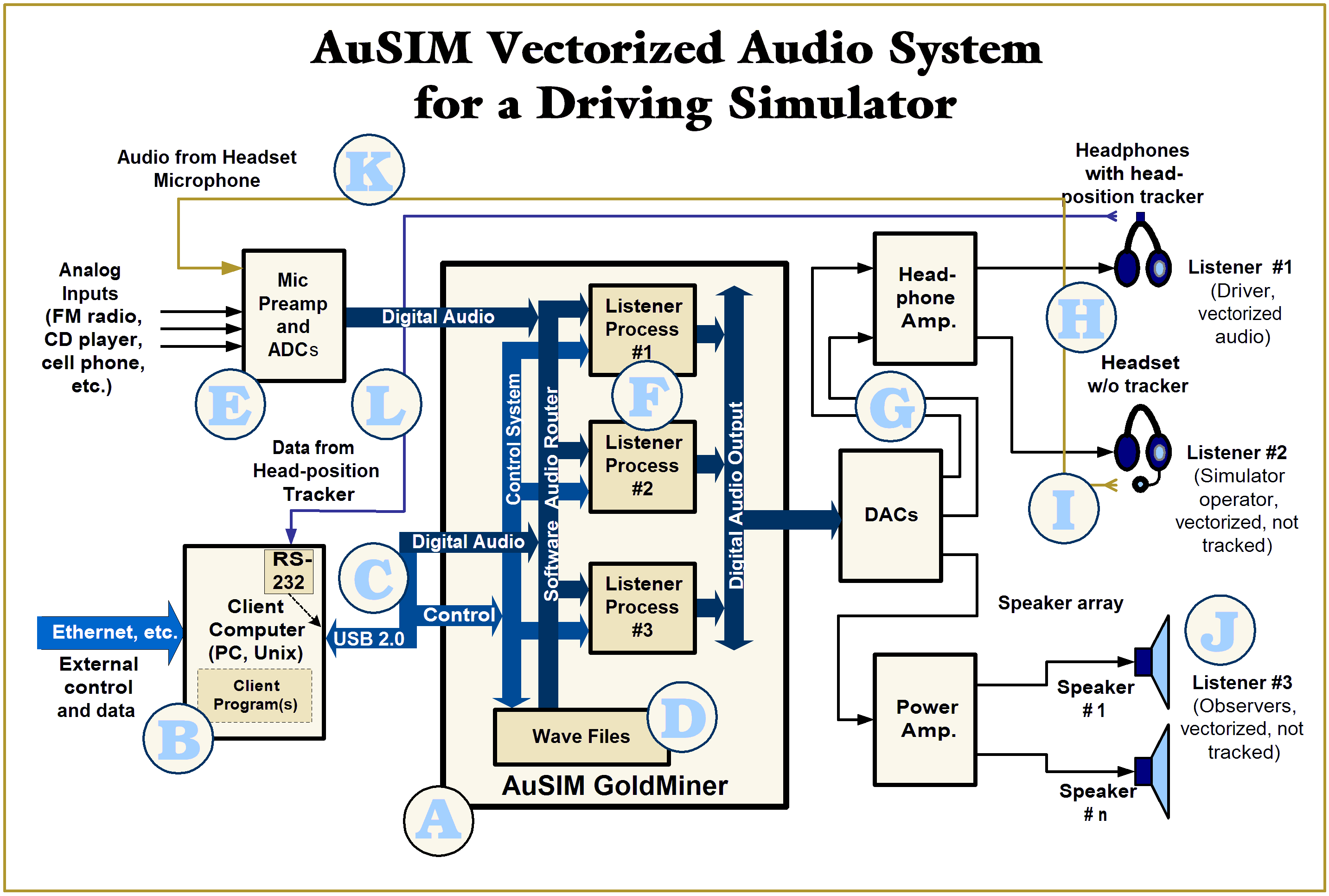

|
| Home < AuSIM3D Applications < Simulation-based Training < Driving Simulator | ||||
Simulation-based Training Develop "Situational Awareness" |
||||
|
Example Application: Driving Simulator An ideal application of this technology is a driving simulator. Realistically creating the aural environment available inside a vehicle can be a daunting task using external and internal speakers. A more elegant and compact solution is a pair of headphones (or near-phones) to simulate all relevant sounds, with the added advantage of ease of reconfiguration. | ||||
In the figure below, an AuSIM GoldServer
(A) is controlled by client applications running on the Client
Computer (B), via a USB 2.0 or RS-232 interface
(C). Sounds to be vectorized can be wavefiles played locally
(D), live audio
via external analog-to-digital converters (E), or from the client computer. Selected
sound sources are routed to the signal processing engines (F), where they are combined
with source, environment and listener model data.  Data streams for multiple listeners are processed simultaneously. The resulting digital audio is exported to D/A converters and power amplifiers (G). The driver of the simulator, listener #1 (H), receives vectorized audio that is synchronized with a head-position tracker. The simulator operator (I), not wearing a head tracker, gets vectorized audio and has a microphone to talk with the driver and observers. An array of speakers serve an area for observers (J), who can listen to sounds presented to the driver, as well as the simulator operator. Audio from the operator's microphone (K) is routed into preamps and A/D converters, while the driver's tracker is connected (L) to the client computer. In this simulator system, positional sounds can be conveyed to the driver from any location, including above and below. This allows effectively simulating sounds off the horizontal plane, such as road noise and screeching tires. The low latency and smooth tracking abilities of the GoldServer translate to a realistic aural experience which will not distract the driver from the rest of the simulation, while giving the simulator operator great flexibility in supplying and positioning multiple stimuli. The client computer controls activity on the GoldServer through client programs utilizing the CRE_TRON API. It can interact with additional simulator resources via its Ethernet connection, and can operate under MS Windows or one of the various Unix operating systems. The simulator operator, working through the client programs, controls what the driver sees and hears, and hears what the driver hears. His communication can be routed to the driver or to the observers, or both, and will be presented to the driver from a fixed location. Given the versatility of the GoldServer, the operator can inject a variety of real-world conditions, such as a noisy radio station, and create a "situation" when the driver's attention is diverted to tuning the radio. The driver can be subjected to various levels of background sounds, warning horns, screeches, voices, and mixed traffic noises. |
||||
|
|
||

|
[Home] [About AuSIM] [Products] [Services] [Applications] |
|
| [Support] [Contacts] [Buy Online] [Downloads] [News & Events] | ||
| © AuSIM Inc. 1998-2011. Last updated on | ||